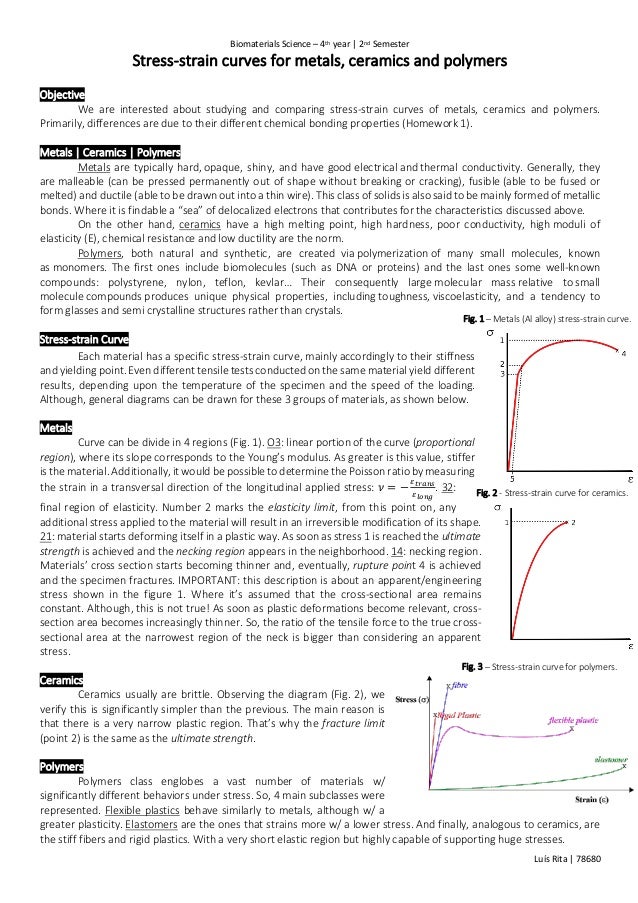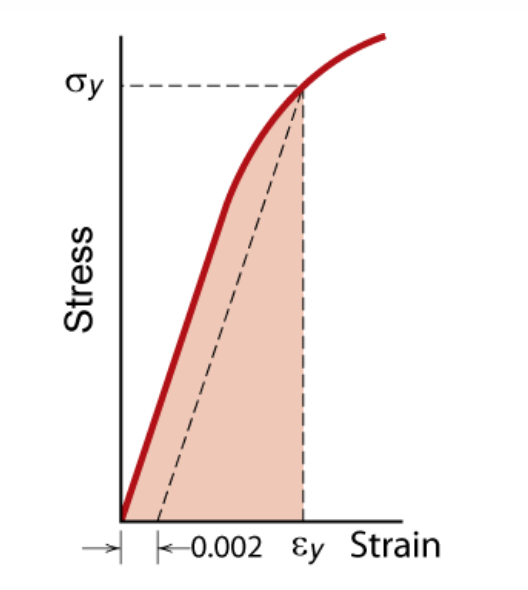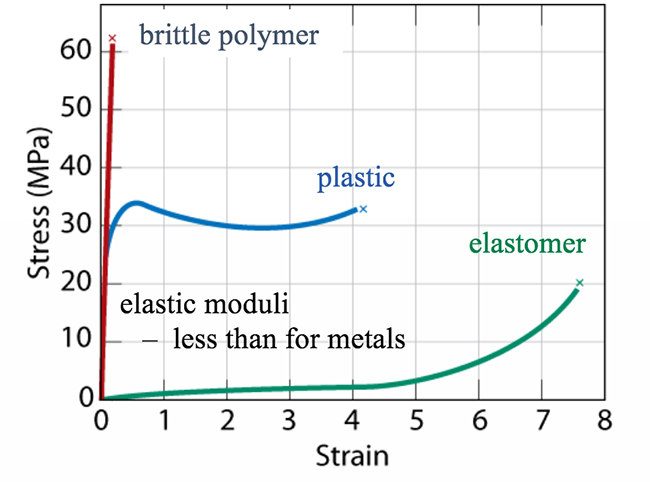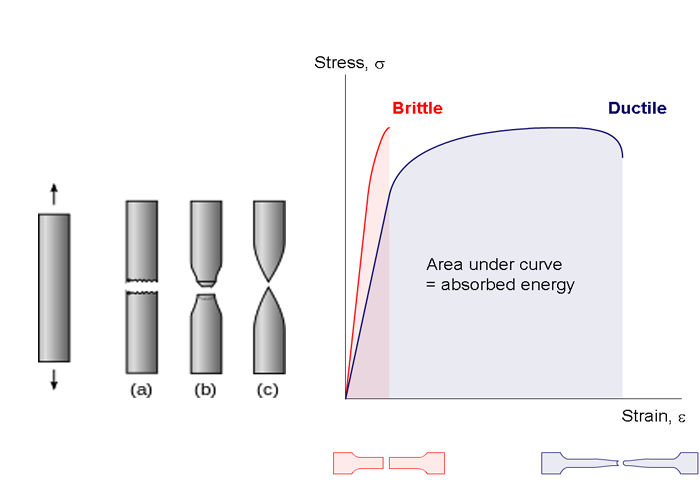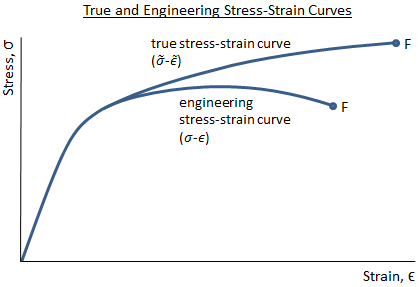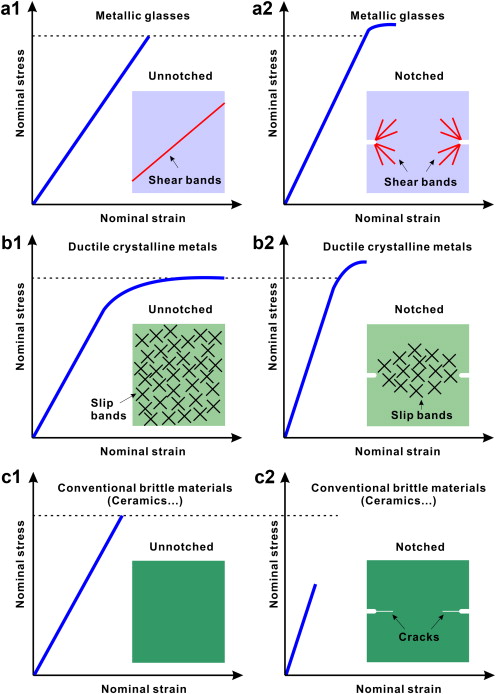Stress Vs Strain Curve Ceramics Vs Metals

For brittle ceramics a three point bending apparatus shown in the figure below is used determine the stress strain behavior and the measurement results are used to calculate an equivalent modulus of elasticity.
Stress vs strain curve ceramics vs metals. Stress vs strain curve. While some of the stress strain curves for polymers might look similar to ones for metals polymers are mechanically different than metals or ceramics. After the point d the material due to strain hardening again starts taking load and the curve rises as seen in the. The elastic deformation of a solid is a reversible process when the applied stress is removed the solid returns to its original state.
1 2 typical stress strain curve of a ductile metal2 the material initially behaves in a linear elastic manner. However when the stress is high the plot passes a small jump on the axes. With a very short elastic region but highly capable of supporting huge stresses. In this the stress is plotted on the y axis and its corresponding strain on the x axis.
Elastomers are the ones that strains more w a lower stress. The stress strain curve in this part of the graph is almost horizontal which implies that there is an appreciable increase in strain for a negligible increase in stress. When the plot of stress versus strain is linear the system is said to be in the elastic state. Stress strain curve is the plot of stress and strain of a material or metal on the graph.
Stress and strain are linearly related and. And finally analogous to ceramics are the stiff fibers and rigid plastics. 1 metals al alloy stress strain curve. Deformation mechanism maps provide a visual tool categorizing the dominant deformation mechanism as a function of homologous temperature shear modulus normalized stress and strain rate generally two of these three properties most commonly temperature and stress are the axes of the map while the third is drawn as contours on the map.
To populate the map constitutive equations are found. 2 stress strain curve for ceramics. Yielding starts at c and ends at d. After plotting the stress and its corresponding strain on the graph we get a curve and this curve is called stress strain curve or stress strain diagram.
Derived from axially loading an object and plotting the stress verses strain curve. The zone where a material will return to its original shape for a given amount of stress toe region applies to a ligaments stress strain curve. A typical stress strain profile for a ductile metal resembles the following. Stress strain curves for two brittle materials.
A highly elastic polymer may stretch over 10 times the original length before breaking while a metal might elastically stretch 10 of the original length elastically and may stretch.



